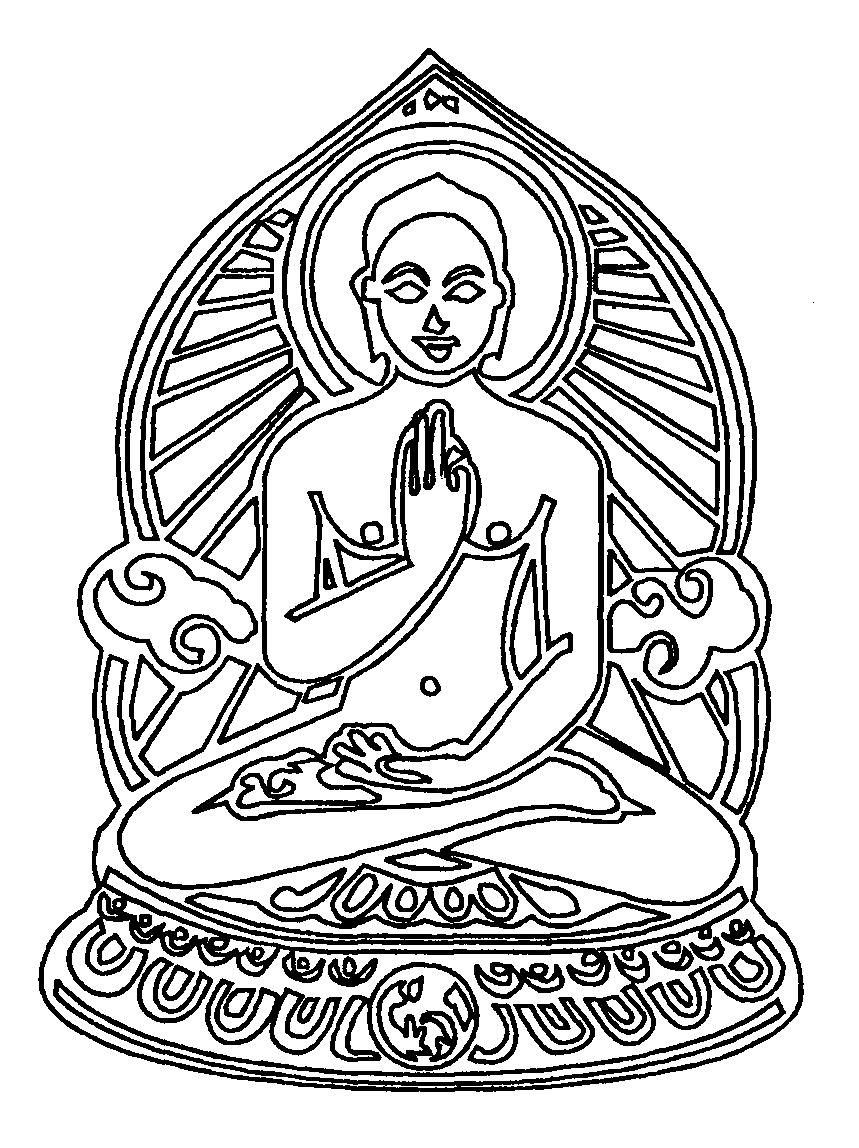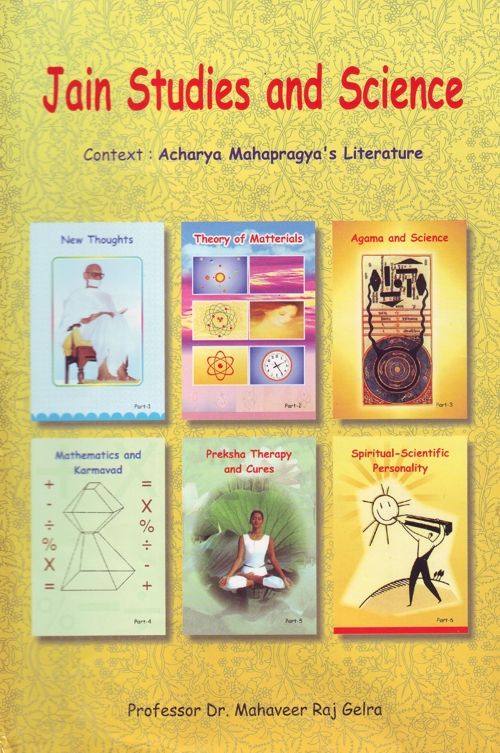In the Sthananga-sutra, ten types of Mathematics are described in the chapter dealing with numerate terms. Mahapragya has presented a detailed note on this mathematical learning, which is complete in itself. This ancient mathematical style will be interesting for the readers.
1. Parikarma (Operators) -In the Indian system, there are eight basic mathematical operations - (i) addition, (ii) subtraction, (iii) multiplication, (iv) division, (v) square, (vi) square-root, (vii) Cube, (viii) Cube-root. But, out of these operations, the majority of them were not employed effectively in the canonical texts.
According to Brahmagupta, there are twenty possible mathematical operations: (i) addition, (ii) subtraction, (iii) multiplication, (iv) division, (v) square, (vi) square-root, (vii) cube, (viii) cube-root, (ix-xiii) five rules for simplifying fractions, (xiv) the rule of three expressions, (xv) complex rule of three expressions, (xvi) rule of five expressions, (xvii) rule of seven expressions, (xviii) rule of nine expressions, (xix) rule of eleven expressions, (xx) rule of commutation.
From the ancient times, the Hindu mathematicians recognized that all the operations of mathematics are based on the two fundamental operations -addition and subtraction. The operations of doubling and halving were regarded important by the Egyptians, Greeks and Arabians, who were ignorant of the decimal system.
2. Calculations -According to Brahmadatta, there are eight types of treatment in which the above mathematical operators can be used to perform calculations:
- Mixed (Mishrak) - four basic operations viz. addition, subtraction, multiplication and division.
- Series (shredhi) - progressions
- Area (Kshetra) - geometry of closed figures
- Volume (Khata) - dealing with excavation and volumes involved therein
- Sets (Chati) - treatment of sets
- Permutation-Combination (Krackchic) - statistical analysis
- Mensuration (rasi) - measurement by grain heaps
- Inverse (chhaya) - fractions
Ancient mathematics had been popularly known as 'Pati-Ganita'. Various scholars have tried to find out the historical background of this peculiar word. According to them, this word is actually constituted of two words: (i) Pati - slate (board) and (ii) Ganita -mathematics. Hence it means that mathematics in which slate is needed to perform calculations. Due to the want of paper up to the end of the nineteenth century, slate was in use. Even now its ample use is found in villages. Scholars regard that this word has been originated from local dialect of northern India which was the offshoot of Sanskrit language. When the Sanskrit texts were translated into the Arabic, they called it 'Ilma-Hisaba-Al-takhta'. Takhta in Arabic language means a slate. They sometimes used another word - 'Hisaba-AI-guvara', as the slate was often replaced by the sand-floors.
The original Sanskrit words used to describe a 'slate for writing' were - palaka and patta; not pati. The word pati finds mention in Sanskrit literature from circa 5lh century. Therefore, in the opinion of the author, the word pati-ganita should actually be referring to 'tabular' form of maths when the decimal counting began in the form of one, two, three, and four.... Some of the latter mathematicians have actually used the word "pati-ganita" for mathematics of integers. This was meant to regard algebra as separate from the numerals.
The following are some mentionable texts of pati-ganit:
- Vakshali Manuscript (c. 300 A.D.)
- Slate mathematics of Shri Dhar and Trisatika (c. 750 A.D.)
- Ganita Sar-Sangraha (c. 850 A.D.)
- GanitaTilaka (1039 A.D.)
- Lilavati (1150 A.D.)
- Ganita Kaumudi (1356 A.D.) and
- Pati-sar written by Munisvara(c. 1658 A.D.)
Besides, Bhaskara-11 had mentioned that Lalla had authored a separate text on pati-ganita.
These treatises comprise the above mentioned twenty operators and eight forms of calculations. Examples have also been given along with the aphorism for explaining the application there of.
4. Example -An example of treatment of series is presented here. It is like a ladder hence, it is called 'progression' in mathematics. Say a person gives four rupees to another. Every next day he adds five rupees to the previous day's amount, continuing up to fifteen days, then what is the total amount so given?
Whatever he gives on the first day is called the 'initial-amount'; incremental amount is called the 'common difference'. The number of days for which the amount is given is called the 'period'. The total sum is called the 'samvardhana'. Whatever is given on the last day is called the 'last-amount'. Whatever is given in the middle of the period is called the 'middle-amount'.
4.1. Method -The period is 15. Subtracting 1, we get 15-1 = 14. Multiplying it with common difference, gives 14x5 = 70. Adding the initial term, it gives 70 + 4 = 74. This is the 'last-amount. Then half of 74 + 4 is half of 78 is 39 which is the middle term.
The sum total is 39 x 15 (number of terms) = 585.
Similarly, the sum of the natural number from one to nine, or sum of more numbers, sum of the sums, sum of the square and cube are the topics of this mathematics.
5. Other Operators -- Rajju: This is called mensuration. Through this, the depth of a lake (tank), height of a tree, etc. are measured. Its geometrical organs are the side, height, hypotenuse, diameter, circular area and circumference etc. This basically involves measurements using rope.
- Rashi (Volume): This is called treatment of volume using heaps of grains.
- Kala-Savarna (Fraction): The number which is not an integer, and is in part, is called Kala-Savarna, when it is made similar. This is called operation of making denominators equal, or the process of making denominators similar. (Vice, history of Hindu Mathematics, p. 179). The upper part is called 'numerator' and the lower part is called 'denominator'.
- Yavat-tavat: As the name suggests, it means the multiplication series can be extended up to as far as possible. It is also used in summation of series.
- Varga (Square): The word varga means 'pankti' or row, or assembly (Samudaya). But in mathematics, its meaning is 'vargaghat' and 'vargakshetra' or its area. The predecessor preceptors have given its general definition as a square region (Samacaturastra). The product of two numbers is also square. The word Kriti is also used for varga implication, but rarely. This is also called 'Samadurasighata' Various scholars have described its various processes.
- Ghana (Cube): This has been used to indicate solid cube and product of three equal numbers in geometrical and mathematical implications. The opinion of Aryabhatta is the product of three equal numbers and a solid with twelve equal angles (as well as sides) is also a cube. The word Vrnda has also been used at some places with the meaning as ghana (cube). This is also called 'Samatrirasaghata'. There is also difference in the processes of calculating the cube. According to statement of Sridhara, Mahavira and Bhaskara, the cube is the product of three equal numbers.
- Varga-varga (Square-Square): Multiplication of square by square. This is also called 'samacaturghata' (raised to power four). First the original number is multiplied by the same number. Then the product is multiplied by the same product. Whatever number results, is called varga-varga phala (square of square). For example 4x4 = 16, 16 x 16 = 256.
- Krakach: In Kala mathematics, it is called 'treatment of Saw Mathematics (krakaca-vyavahara). This is a kind of patiganita. This gives the knowledge of sawing of wood and toiling of stones.
For example, 1/2 and 1/3. Its meaning as Kala Savarna will be 3/ 6; 2/6 respectively.
For example, a wood piece is 20 fingers thick as the base and 16 fingers thick at the top. It is 100 fingers in length. If it is sawed at four places, what will be its sawed up measure in hands? The thickness of the base and the top are added, 20 + 10 = 36. This is divided by 2, giving 36/2 = 18. This is multiplied by length, resulting in 100 x 18 = 1800. Then this is multiplied by the number of sawing processes, giving 1800 x 4 = 7200. This is divided by 576, getting 7200 / 576 = 12.5. This sawing is measured in terms of 'hands'.
The commentator of the Sthananga has not given all types of examples falling under various operations. It was perhaps left for super intelligent practitioners of mathematics.
The commentator has quoted a verse while describing 'PandanikaShabd' in the beginning of the exposition of the Sutrakratang 2/1. In it ten types of mathematics have been mentioned. Out of these nine types are similar to those in the Sthananga. Only one type has been mentioned differently - the word 'kalpa' of the Sthananga is not there, instead the word 'Pudgala' finds mention which is not available in the Sthananga.

 Dr. Mahavir Raj Gelra
Dr. Mahavir Raj Gelra

